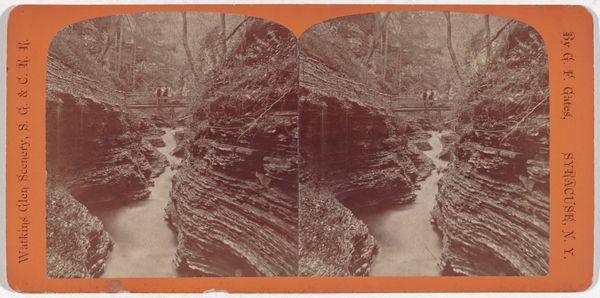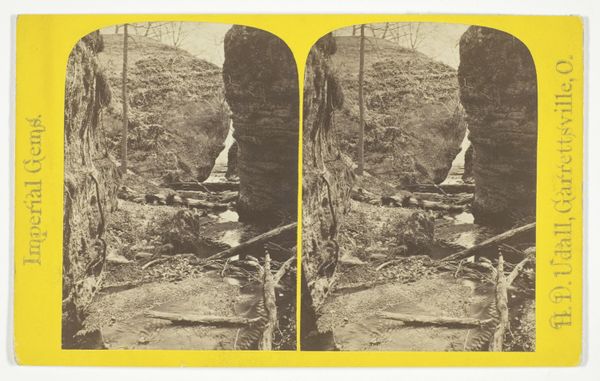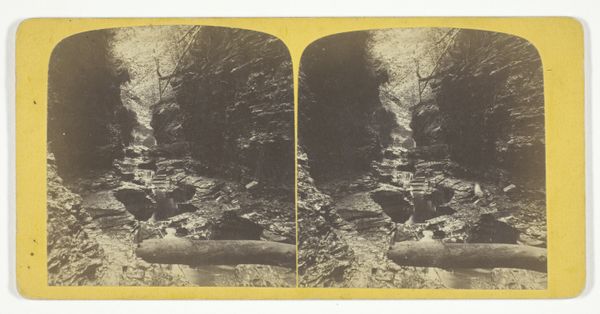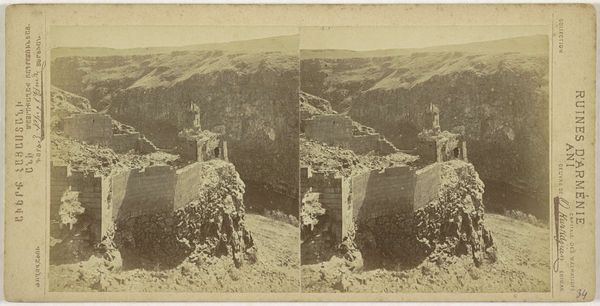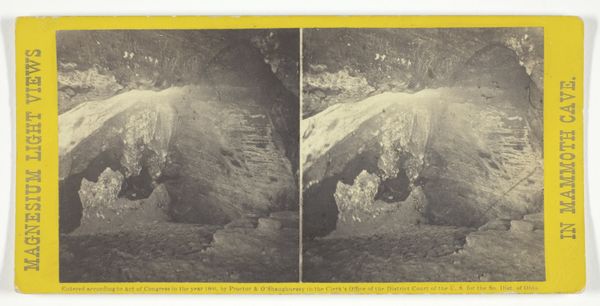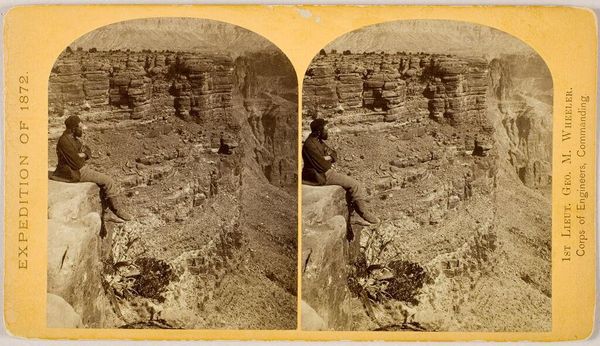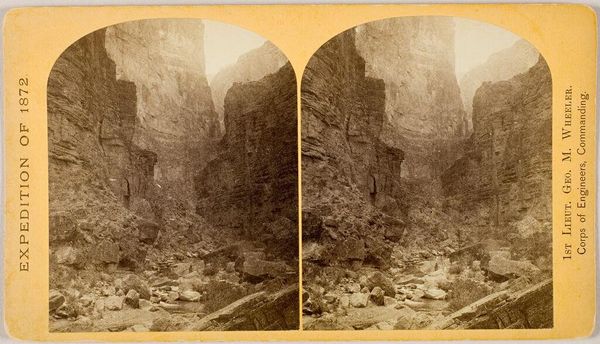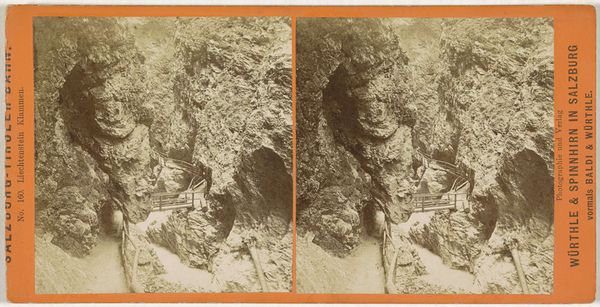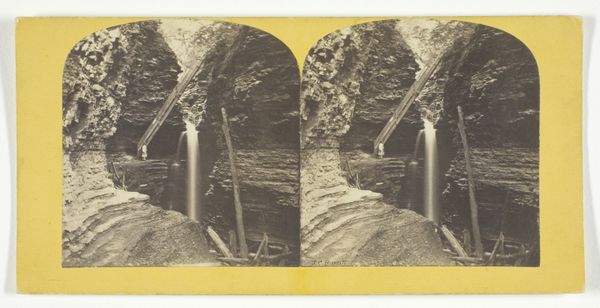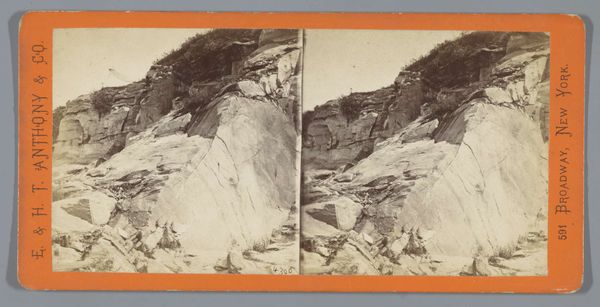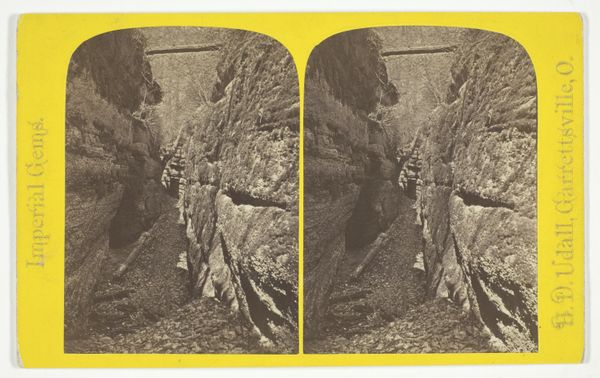
photography
#
landscape
#
photography
#
hudson-river-school
Dimensions: image (each): 8 × 7.46 cm (3 1/8 × 2 15/16 in.) mount: 8.7 × 17.6 cm (3 7/16 × 6 15/16 in.)
Copyright: National Gallery of Art: CC0 1.0
Editor: This stereo photograph, "Watkins Glen Scenery, Spiral Gorge," taken around 1860 by George F. Gates, has a fascinating way of capturing this gorge. I'm struck by the layers and textures revealed in the rock formations and the subdued tones of the sepia print. What jumps out at you? Curator: The act of reproducing this scene itself speaks volumes. Consider the industrial context: the S. G. & C. R. R. mentioned here refers to the Syracuse, Geneva & Corning Railroad. The photograph becomes a commodity, facilitating tourism to Watkins Glen. What are your thoughts on the connection between photography, industrial development and leisure during that era? Editor: That's a great point. I hadn’t thought about the role of the railway in shaping tourism and, in turn, the market for these kinds of images. I suppose it implies an increasing accessibility of nature as a consumer experience. Curator: Precisely. Furthermore, look at the technical process itself. Early photography, specifically stereo photography, needed expertise, materials, and distribution networks. It reflects a particular class interest capable of commanding such resources. It suggests that "nature," already a constructed idea, is being materially packaged and sold. Where do we draw a line between documenting nature versus its exploitation? Editor: So it's less about the intrinsic beauty of the gorge, and more about the mechanics of its representation and the way the process facilitated access and consumption? It’s interesting to think about what Gates thought he was creating with the image, as it clearly has social consequences and implications beyond artistic. Curator: It raises questions about our consumption of art. Reflect on how technological advancements change artistic creation and its place within society. Editor: This has given me so much to consider; I’m definitely rethinking my initial romantic notions about the landscape and it helps understand its historical making through consumption and labour. Thank you. Curator: A photograph isn't just a window onto the world, but a product of a very particular, and powerful, means of production. Always question the material conditions that allowed such beauty to be captured and commodified in the first place.
Comments
No comments
Be the first to comment and join the conversation on the ultimate creative platform.
